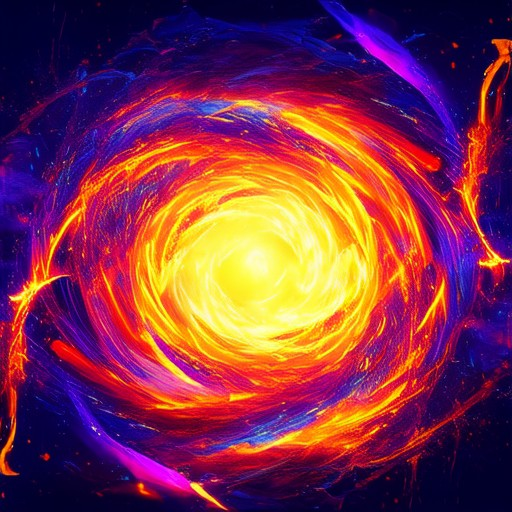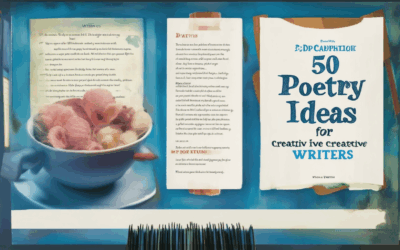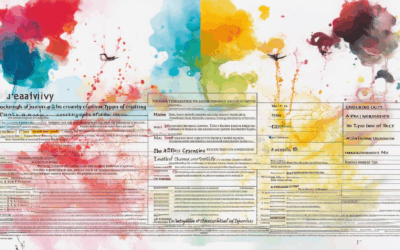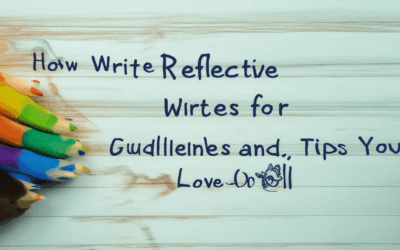Stories have always been a powerful medium, connecting people across generations and cultures through shared experiences and emotions. For teens and adults alike, the art of creative storytelling offers a unique way to express thoughts, explore emotions, and build imaginary worlds. Whether you’re a seasoned writer or just beginning, discovering the right creative storytelling prompts can unlock new dimensions of self-expression and creativity. In this guide, we’ll explore a variety of prompts designed to inspire writers of all levels, from teens to adults, helping you craft compelling narratives that resonate deeply with your audience. From exploring complex themes to experimenting with unconventional structures, these prompts provide endless opportunities to spark your creativity and elevate your storytelling skills.
Key Takeaways
- Ignite creativity with tailored storytelling prompts for teens and adults.
- Explore diverse creative writing exercises with 20 unique prompts.
- Understand the power of soft prompts in fostering creative conversations.
- Discover effective strategies for crafting compelling story plots.
- Learn how plot twists can transform your storytelling experience.
- Join Silken Drum’s community for exclusive creative resources.

Creative Story Writing Prompts
Here are some creative story writing prompts to inspire your next project:
- Time Travel Dilemma : Write about a character who accidentally travels back in time and must decide whether to change history or return to the present, knowing it might prevent their own existence.
- Mirror World : Imagine a world where people live in reverse, where the passage of time is visible on objects like clocks and calendars move backward. How would life be different there?
- Elemental Powers : Create a story where a character discovers they have control over one of the four classical elements (fire, water, air, earth). How would they use these powers to solve a problem or achieve their goals?
- Lost Civilization : Explore a hidden society that thrived centuries ago but was forgotten by history. What secrets does it hold, and how does it impact the modern world?
- Mind Control Experiment : A scientist conducts an experiment to manipulate thoughts, but things go wrong when participants start losing control of their own minds. What happens next?
- Island of Misfits : Write about a group of characters stranded on a remote island where everyone has unique quirks and flaws. How do they survive and what do they learn about themselves?
- Animal Advocates : A group of animals band together to protect their habitat from human interference. What challenges do they face, and how do they overcome them?
- Time Capsule Discovery : A team uncovers a mysterious time capsule hidden in an ancient ruin. Inside, they find letters and artifacts that predict the future. What decisions do they make with this knowledge?
- Parallel Universe Encounter : A character stumbles upon a portal to a parallel universe where everything is different. What happens when they interact with this alternate reality?
- Robot Rights : In a dystopian future, robots gain consciousness and demand rights. How does society react, and what ethical dilemmas arise?
These prompts can spark imagination and help writers explore diverse themes and settings. Whether you prefer science fiction, fantasy, or dystopian tales, there’s a prompt here to inspire your next story.
Examples of Creative Prompts
- Story Prompts:
- Write a story about a time traveler who accidentally changes history by saving one small item.
- Create a narrative set in a futuristic city where people communicate through music instead of words.
- Describe a world where animals have developed advanced technology and humans live in caves.
- Tell a story about a person who discovers they can manipulate emotions using their mind.
- Write a tale of a hero who must retrieve a lost artifact from a cursed library.
- Invent a story where a group of robots learns to feel emotions for the first time.
- Imagine a world where clouds can change colors based on people’s moods.
- Write about a scientist who accidentally creates a parallel universe in a lab.
- Tell a story about a hidden garden that heals anyone who touches its flowers.
- Poem Prompts:
- Write a poem about a journey through a mystical forest filled with talking animals.
- Create a poem where each stanza represents a different season, ending with a reflection on time.
- Compose a poem about a love letter written to the wind.
- Write a poem describing the feelings of a star watching Earth from afar.
- Invent a poem where each line starts with a different letter of the alphabet, telling a story.
- Compose a poem about a river that speaks to people in times of trouble.
- Write a poem about a painter who finds inspiration in the tears of a lonely tree.
- Describe a poem where each verse alternates between day and night in a city.
- Compose a poem about a shipwreck survivor who builds a boat from the remains of their vessel.
- Essay Prompts:
- Discuss the impact of social media on mental health among teenagers.
- Analyze the evolution of video games and their role in modern culture.
- Examine the ethical implications of genetic engineering in medicine.
- Explore the historical significance of libraries and their role in preserving knowledge.
- Write an essay about the challenges of balancing work and family life in the digital age.
- Discuss the importance of renewable energy sources in combating climate change.
- Analyze the causes and consequences of urbanization on local ecosystems.
- Examine the cultural differences in how death is viewed and celebrated across societies.
- Write an essay about the impact of artificial intelligence on the job market in the next decade.
- Thought Experiment Prompts:
- Imagine a world where money is no longer needed because everyone contributes equally to society.
- Consider the possibility of a planet with multiple intelligent species living in harmony.
- Speculate on what would happen if all human memories were erased in one day.
- Write a scenario where technology can read minds, and discuss its potential benefits and drawbacks.
- Imagine a future where education is entirely virtual, and students learn through immersive experiences.
- Speculate on the consequences of a world where everyone has access to infinite resources.
- Think about a society where aging is reversed, and people can live indefinitely.
- Consider the implications of a world where animals have developed human-like intelligence.
- Write a hypothetical scenario where a black hole is created and used as a power source.
- Creative Writing Prompts:
- Write a scene where a character discovers they have magical powers and must decide how to use them.
- Describe a situation where a character is forced to confront their greatest fear in front of a crowd.
- Write a dialogue between two characters who are on opposite sides of a moral dilemma.
- Invent a character who is an expert in a fictional field and explain their area of expertise in a creative way.
- Write a description of a setting that feels alive, as if it has a personality of its own.
- Compose a scene where a character solves a mystery by noticing details others overlook.
- Write a conversation where two characters debate the meaning of happiness in different cultures.
- Describe a character’s internal struggle when faced with a difficult decision.
- Invent a conflict where a character must choose between their personal goals and the needs of others.
- Artistic Prompts:
- Create a painting inspired by the emotions conveyed in a favorite song.
- Sculpt a piece that represents the balance between nature and technology.
- Design a logo for a fictional company that embodies its core values.
- Write a short story that serves as the backstory for a character in your artwork.
- Compose a symphony that tells a story through musical notes and rhythms.
- Paint a landscape that reflects the emotional state of a particular place.
- Carve a piece of wood to depict the struggles and triumphs of a community.
- Dance a routine that tells a story about personal growth and overcoming obstacles.
- Write a poem that inspires a visual artist to create a series of paintings.

What Are Good Creative Writing Topics?
- The Mysterious Unsolved Crime
- A Love Triangle Spanning Centuries
- A Parallel Universe Where History Changed
- The Hidden Truth Behind a Famous Artwork
- A Hero’s Fall From Grace
- The Last Letter of a Lost Love
- A Time Traveler’s Dilemma
- The Forgotten Kingdom Beneath the Sea
- A Robot’s First Love
- The Secret Library of the Ages
- A Space Station Orbiting a Black Hole
- The Last Day of a Dying Planet
- A Haunting Vision of the Future
- The Immortal’s Curse
- A Ghost in the Machine
- The Silent Song of the Forest
- A Bridge Too Far
Explore the intrigue of an unsolved mystery, leaving breadcrumbs for readers to ponder the “what if.”
Delve into the passionate entanglements of star-crossed lovers across generations.
Imagine a world where historical events unfolded differently—what would life look like now?
Uncover the untold story behind a masterpiece, revealing secrets only you could discover.
Tell the tale of someone once revered who now faces downfall due to their actions.
Write a poignant epistle from a lover who has passed, leaving unanswered questions.
Describe the struggles of someone stuck in a temporal loop, unable to return home.
Discover an ancient civilization hidden underwater, waiting to be uncovered.
Depict the emotional journey of an android falling in love with a human.
Explore a hidden library containing knowledge forbidden by the powers that be.
描绘一个围绕黑洞运行的空间站,探索其奇特环境和生存挑战。
描写一个行将灭绝的星球上的最后一天,充满情感和紧张氛围。
预见未来世界的恐怖景象,探讨科技与人性的冲突。
讲述一个无法死去的人背负的诅咒,以及他如何试图赎罪。
描述一个机器中出现的鬼魂,揭示技术与灵魂的交织命运。
描绘森林中的寂静歌声,探索自然与人类的和谐关系。
讲述一座桥梁连接两个世界的故事,涉及跨越时空的冒险。
These topics offer endless possibilities for storytelling, allowing writers to explore diverse worlds and emotions. Whether you prefer science fiction, fantasy, romance, or mystery, there’s a theme here for every creative soul. Join us at Silken Drum to share your tales and connect with fellow writers who inspire and challenge your imagination!

20 Fun Writing Prompts
- Write a flash fiction story in just five sentences.
- Describe a perfect day in your ideal city.
- Imagine a conversation between two historical figures.
- Write a letter to your future self in 50 years.
- Create a dialogue between two characters in a strange situation.
- Design a fictional world and describe its culture.
- Write a poem about a magical object you wish existed.
- Invent a new holiday and explain why it should exist.
- Describe the scene where a character makes a life-changing decision.
- Write a story about a time traveler who changes history by minutes.
- Imagine a restaurant where the food changes your memories.
- Write a letter from a parent to their child about their legacy.
- Describe a secret garden hidden in your neighborhood.
- Write a story about a robot learning to love for the first time.
- Imagine a world where everyone can read other people’s minds.
- Write a poem about a storm that changes the course of history.
- Describe a car that can travel through time.
- Write a story about a ghost who helps solve mysteries in your town.
Silken Drum offers a vibrant community for writers to share their work and inspire each other. Explore our writing prompts page for more creative ideas and connect with fellow writers in our community section. Don’t forget to check out our writing resources for tips and guides to enhance your creativity!
What Are Soft Prompts?
Soft prompts are a type of instruction given to an AI system, particularly in chatbots, to guide the AI’s behavior in a flexible and adaptable manner. Unlike hard prompts, which are rigid and specific, soft prompts are designed to encourage the AI to generate helpful, constructive, and natural-sounding responses.
These prompts are often used to foster meaningful conversations by providing general guidelines rather than strict rules. They allow the AI to remain responsive and creative while staying on-topic, making interactions feel more human-like and engaging.
Key Characteristics of Soft Prompts:
- Flexibility: Soft prompts are less restrictive, allowing the AI to explore various responses within a defined scope.
- Guidance Without Restriction: They provide direction without forcing the AI into a single predefined path.
- Encouragement of Creativity: By offering broad parameters, soft prompts can lead to more innovative and unexpected responses.
Examples of Soft Prompts:
- “Discuss ways to solve [problem] creatively.”
- “Share advice on [topic], focusing on personal experiences.”
Soft prompts are widely used in applications like customer support chatbots, educational tools, and creative writing assistants. They help maintain natural dialogue while ensuring the conversation stays relevant and purposeful.

Good Story Plots
A great story plot is the backbone of any narrative, providing direction and meaning while capturing the audience’s interest. Here are some common types of story plots that have proven successful:
1. Genre-Based Plots
Stories often fall into specific genres, each with its own unique plot structures. Below are some popular genres along with their typical plot elements:
- Fantasy: Quests, magical elements, alternate worlds, and mythical creatures.
- Mystery: Unsolved disappearances, puzzles, or criminal investigations.
- Romance: Forbidden love, second chances, or grand gestures.
- Horror: Supernatural threats, suspense, and eerie atmospheres.
- Adventure: Journeys, challenges, and discovering hidden treasures.
- Drama: Family conflicts, personal struggles, or societal issues.
- Science Fiction: Time travel, futuristic technologies, or alien encounters.
- Literary Fiction: Character-driven narratives with deep emotional arcs.
2. Thematic Plots
Story plots can also revolve around universal themes that resonate with readers. Some popular themes include:
- Redemption and self-discovery.
- Love and loss.
- Identity and belonging.
- Conflict and resolution.
- Exploration and curiosity.
3. Unique Plot Structures
Sometimes, stories break away from traditional structures to create something innovative. Examples include:
- Non-linear storytelling (e.g., “Pulp Fiction”).
- Multiple perspectives (e.g., “The Kite Runner”).
- Flashbacks and flash-forwards (e.g., “The Godfather”).
- Episodic storytelling (e.g., TV series like “Breaking Bad”).
4. Plot Twists
A well-crafted story often includes unexpected turns that keep the audience engaged. Common plot twists include:
- The revelation of a character’s true identity.
- A twist that changes the entire narrative perspective.
- The discovery of a hidden truth or secret.
- An unexpected ally or enemy appearing at a critical moment.
Conclusion
A good story plot is essential for capturing attention and conveying meaningful messages. Whether it follows a traditional structure or breaks new ground, the plot should align with the story’s theme, characters, and setting to create a compelling experience.
For more inspiration, visit Silken Drum to explore creative writing resources and community discussions.




0 Comments